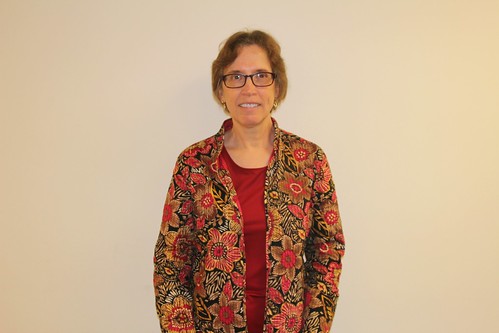
This month, the Know Your Farmer, Know Your Food initiative (KYF2) celebrates an important milestone: the sixth anniversary of the first convening of the KYF2 Task Force. Since 2009, the Task Force, a dedicated team of experts from across the Department, has been hard at work in support of USDA’s commitment to local and regional food systems. As we mark this important milestone, we wanted to recognize some of the outstanding USDA employees who have been at the core of this work.
Jill Auburn, National Program Leader at USDA’s National Institute of Food and Agriculture (NIFA) and manager of the Beginning Farmer and Rancher Development Program, has been part of the KYF2 Task Force since the beginning. Jill came to USDA in 1998 and has seen the Department’s work on local food evolve. Jill describes the launch of the Task Force as a recognition that “the world has been doing this [local food], and USDA needs to engage. We aren’t the lead on this – our work is being driven by what’s happening in communities around the country – but USDA has a lot of tools to assist.” The 2008 and 2014 Farm Bills have given USDA many tools and authorities to support local and regional food systems.
As a member of the KYF2 Task Force, Jill organized much of the data that now appears on the KYF2 Compass map, a visual guide to over 4,000 federally-funded local food projects. The Compass helps users see how federal funds are supporting their community’s local food system, or explore and learn from others who are using federal funding for local food work. “The Compass is a shining example of transparency in government,” says Jill.
Many of NIFA’s contributions to local and regional food systems appear on the Compass. For instance, the Community Food Projects competitive grants program helps develop community-based local food projects, while the Small Business Innovation Research program helps local food and other businesses research and test innovative concepts. The Agriculture and Food Research Initiative, NIFA’s flagship research program, supports local food research as part of its broad portfolio. Meanwhile, the Beginning Farmer and Rancher Development Program – which Jill oversees – supports organizations that train beginning farmers and ranchers, many of whom get their start selling into local and regional markets. And the recently-launched Food Insecurity Nutrition Incentive Program supports strategies that increase fruit and vegetable purchases among SNAP participants by providing incentives at the point of purchase, with a special emphasis on strategies that utilize local food such, as farmers markets.
“At NIFA, we want to advance knowledge and the application of knowledge, whether it’s through formal education or practical outreach. Local and regional food systems is an exciting area where there are a lot of interesting research questions, areas to innovate, a lot of interest in our role on the part of students and new farmers,” says Jill. “Tapping into local markets is a way for new farmers to start up.”
For more information on USDA resources to support local and regional food systems, explore the KYF2 website, including financial resources and other tools, and visit the Compass map. Tweet about your local food work using #localmade.
